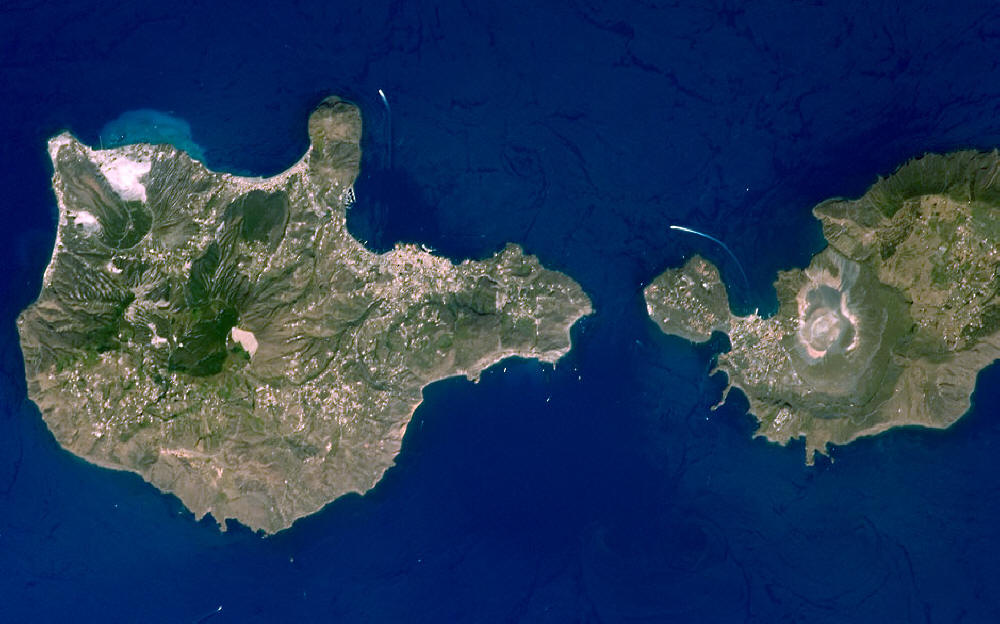


|

Lipari and Vulcano
Lipari,the largest of the Aeolian Islands, was created by a succession of four volcanic movements, the most important of which was the third one, presumably lasting from 20,000 BC to 13,000 BC. A further important phenomenon should have happened around 9,000 BC. The eruption, at Monte Pilato on the NE tip of the island, formed the Rocche Rosse and Forgia Vecchia obsidian lava flows, which have been dated variously from about 500 to 1230 AD. The last recorded eruptions occurred in the fifth century CE when the airborne pumice covered Roman villages on the island. The volcanos are considered active, though steaming fumaroles may still be seen and hydrothermal activity. As a result of the volcanic origins, the island is covered with pumice and obsidian. Pumice mining has become a large industry on Lipari, and the pale pumice from Lipari is shipped internationally.